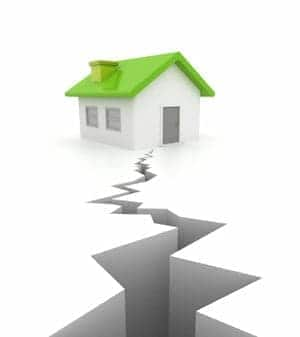What does dwelling insurance cover?
“Dwelling coverage is the replacement cost coverage for your home. It is listed as “Coverage A” on the declarations page of your policy,” says Mark Friedlander, director of corporate communications for the Insurance Information Institute. “Dwelling insurance typically helps cover the home you live in plus attached structures, such as an attached garage”.
Dwelling coverage includes the basic structure of your home and things that are permanently affixed to your home like cabinets, counters and built-in appliances.
A standard homeowners policy comprises a few different types of coverage rolled into one policy, but dwelling coverage is the most important component.
Your dwelling coverage limit should match the replacement cost of your home, which is the cost of rebuilding your home at today’s prices. A standard homeowners insurance policy (HO-3 policy) includes replacement cost coverage for your home rather than actual cash value, which is the depreciated value of the home. An HO-3 policy is an all-perils policy, which means anything that isn’t specifically excluded is covered.
If you are a landlord or stay in a house only for a few months, you may only need a dwelling fire policy (DP-1, DP-3). These dwelling policies only cover damage to the house from named perils (only those listed are covered) and don’t include other coverage found in a homeowners policy like personal property coverage.
What is not covered by dwelling insurance?
The dwelling coverage portion of a homeowners insurance policy doesn’t cover floods or earthquakes. There are other exclusions on most policies, such as acts of war or terrorism, normal wear and tear, water and sewer backup and termites or other pests.
Dwelling insurance on a DP policy has more exclusions; anything that isn’t a named peril is not covered. Dwelling fire policies usually exclude theft. Read your policy carefully as there are multiple levels of DP policy. A DP-1 covers less than a DP-3.
The dwelling coverage limit doesn’t cover other structures on the property – things like detached sheds, fencing, gazebos, etc. These are covered by the other structures section of a home insurance policy and may or may not be covered by a dwelling fire policy.
Coverage for some exclusions can be added with an endorsement for an additional cost.
Types of dwelling coverage
There are a few types of dwelling coverage:
If you own a home. On your homeowners policy, dwelling coverage is listed as Coverage A. It’s one of several types of coverage within your policy. Combined with the “other structures” section, it helps rebuild every aspect of your home and replace the contents.
If you own a rental property. Dwelling coverage for landlords and people who own rental property is often sold as a DP-1, DP-2, or D-P3 policy. It only covers damage to the structure of the building due to certain named perils.
If you own a condo. Your condo policy may include some dwelling coverage, but not as much as if you own a home since you aren’t responsible for insuring the structure itself, only items on the inside.
How much dwelling coverage do I need?
The amount of dwelling coverage you need is based on calculating the cost it would take to rebuild your home from the ground up. The higher the reconstruction cost, the more you pay in premiums.
You may have poked around on popular real estate websites to see what your home’s market value is– but this is not the amount it would take to replace your home. Replacement cost is not related to market value.
Sometimes prices increase in your area for building materials and supplies and your current coverage just doesn’t cut it anymore.
“A recent analysis conducted by the Insurance Information Institute showed cumulative replacement costs for homes increased 55% from 2019-2022 due to supply chain disruption, leading to the higher cost of construction materials and labor,” Friedlander says. “As a result, it’s important for homeowners to make sure they have an adequate dwelling coverage limit in their policy to reflect this inflationary spike. We recommend calling your insurance agent for a “checkup” to make sure your policy limits are up to date and adjust any gaps in coverage.”
You can do this by opting for extended replacement cost coverage. It’s an endorsement you can add to your policy to cover gaps and account for inflation or pricing changes.
Another add-on is guaranteed replacement coverage, which guarantees that your claim will be paid out after a natural disaster or fire no matter what. Even if your claim exceeds the dwelling limits on your policy, you’re covered.
Dwelling coverage limits and deductibles
When you purchase your homeowners policy, you choose what amounts of insurance to buy. The dwelling limit is the maximum amount the insurance company pays out in the event of a claim. You will also have to choose a deductible, and in some states, there are separate windstorm deductibles. Read your policy very carefully and ask a lot of questions to make sure you have the right amount of coverage for the size, age and condition of your home.
Remember, if you have a major event like a fire or storm you want to be able to rebuild your home if necessary. Your dwelling coverage should be high enough to do so.
How is dwelling coverage determined?
To calculate how much dwelling coverage you need, determine how much it would cost to rebuild your home from scratch.
This includes all the materials and labor in your area to rebuild your home from the ground up. You should multiply the square footage of your home by the average cost of all the materials needed and factor in the labor. This gives you a good estimate of how much your dwelling limits should be. Your insurance agent can help with this.
However, to get it right it’s best to use a detailed reconstruction cost calculator; most insurance companies have one available. Remember that your mortgage company will have a minimum requirement for the dwelling coverage on your policy.
For the dwelling coverage on a condo, the number should be much less because your condo association’s master policy covers a portion of the repairs. A good estimate is about 20% of your unit’s value or what your lender requires.
Frequently asked questions about dwelling coverage
What is increased dwelling protection coverage?
Increased dwelling coverage protects you against gaps in your policy in case inflation or increased prices for building materials cause your home to become underinsured. It’s often offered as an endorsement.
Do I need increased dwelling protection?
You may need increased dwelling protection if you live in a disaster-prone area, such as one subject to floods, wildfires or hurricanes, which cause increased demand and pricing for building materials and labor. It’s a good idea for anyone to carry extended replacement cost coverage, as price increases can’t always be predicted.
Why is my dwelling coverage so high?
Inflation and pricier and scarcer building materials have contributed to the need for higher dwelling limits, which means higher prices. The cost to rebuild your home is reflected in the amount of dwelling coverage you purchase.







